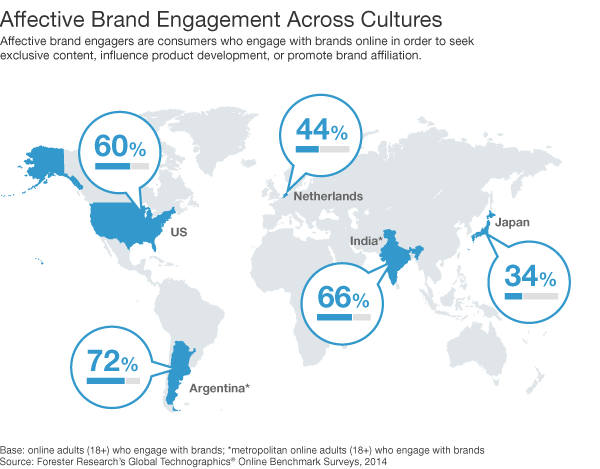The Data Digest: The Cultural Dimension Of Brand Relationships
At the root of human behavior is the impulse for connection. History is our witness: As times change, certain trends emerge that anchor shared experiences, around which people collectively rally. Today, with social media acting as a platform for ubiquitous connections, diverse consumers build solidarity around digital experiences. Beyond simply looking for deals and discounts, individuals who “friend,” “follow,” and “like” brands seek closer brand relationships.
However, while consumers around the world want to be part of a brand community, some cultures are more enthusiastic than others. Forrester's Consumer Technographics® data shows that Latin American online adults are more passionate about engaging with brands for affective reasons than their European and Japanese counterparts:

This variation roughly parallels Hofstede’s dimensions of culture, which suggests that the differences are partially a reflection of cultural nuances: Those populations that are most motivated to share in the brand community are all-around collectivist rather than individualist.
In his recent report, my colleague Ryan Skinner emphasizes the value of capitalizing on consumers who connect with brands through social networks for relationship-building purposes. He says, “[when] Dr Pepper shared content inspired by its die-hard fans, [the company] grew its fan base by a factor of eight and engagement by more than 40% for two years running.” According to Skinner: “one of the key reasons that people engage with brands they buy from is simply to show their affinity. [Therefore] successful relationship marketers offer content that gives them just that opportunity.” By giving consumers a chance to build community around a brand, companies can satisfy a deep-seated need and also unlock the potential of their customer base.
